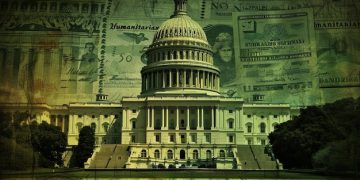Insider’s Guide: Student Loan Refinancing in 2025

Navigating student loan refinancing in 2025 requires understanding potential interest rate fluctuations, eligibility criteria, and the impact of federal loan forgiveness programs, ensuring borrowers make informed decisions for their financial future.
Planning your financial future involves navigating the complexities of student loans. As we approach 2025, refinancing your student loans can be a strategic move. This Insider’s Guide: Navigating the Complexities of Student Loan Refinancing in 2025 is designed to provide a clear roadmap.
Understanding the Student Loan Refinancing Landscape in 2025
Refinancing student loans involves replacing one or more existing loans with a new loan, ideally with a lower interest rate or more favorable terms. In 2025, the landscape is shaped by economic factors, federal policies, and the evolving needs of borrowers. Let’s delve into the key aspects.
Economic Factors Influencing Refinancing
Interest rates play a crucial role in the attractiveness of refinancing. Monitoring the Federal Reserve’s monetary policy and broader economic trends is essential.
Federal Policies and Loan Forgiveness Programs
Keep an eye on any changes to federal student loan programs, including potential forgiveness initiatives. These can significantly impact your refinancing decisions.
- Check the latest updates from the Department of Education.
- Understand the eligibility criteria for any new loan forgiveness programs.
- Assess how federal policies align with your refinancing goals.
By staying informed about these factors, you can make strategic choices when refinancing your student loans in 2025. The economy and federal policies are always fluctuating, impacting the decision of whether or not to refinance. It is best to stay up to date on these changes.

Evaluating Your Eligibility for Refinancing
Before diving into refinancing options, it’s essential to assess your eligibility. Lenders typically consider factors such as credit score, income, and debt-to-income ratio. Let’s explore each of these in more detail.
Credit Score Requirements
A good credit score is a primary factor in securing favorable refinancing terms. Aim for a score in the high 600s or above to improve your chances.
Income and Employment Stability
Lenders want assurance that you can repay the loan. Stable income and employment history demonstrate your ability to meet your financial obligations.
- Review your credit report for any errors.
- Consider paying down other debts to improve your debt-to-income ratio.
- Maintain a stable employment history to show lenders you are reliable.
Understanding and improving these eligibility factors can significantly enhance your prospects for successful student loan refinancing. Focus your efforts on being transparent with the lenders and being prepared to discuss any concerning aspects of your credit history. Often, there are ways to mitigate concerns through documentation.
Comparing Refinancing Options: Fixed vs. Variable Rates
One of the most important decisions when refinancing is choosing between a fixed or variable interest rate. Each option has its advantages and disadvantages, depending on your risk tolerance and financial goals. Let’s break down the key differences.
Fixed Interest Rates: Stability and Predictability
Fixed rates remain constant throughout the life of the loan, providing stability and predictability in your monthly payments.
Variable Interest Rates: Potential for Savings, but Risk Involved
Variable rates can fluctuate based on market conditions, potentially offering lower initial rates but also carrying the risk of increased payments.
- Research the lender’s reputation and customer reviews.
- Calculate the total cost of the loan under different interest rate scenarios.
- Consider your long-term financial goals and risk tolerance.
Carefully comparing these options will help you choose the refinancing plan that best fits your needs and financial situation in 2025. Also be sure to read any disclaimers or fine print associated with the refinance choices. Do not hesitate to ask clarifying questions of the lender.
The Impact of Federal Loan Forgiveness on Refinancing Decisions
Federal loan forgiveness programs can significantly influence your decision to refinance private student loans. It’s essential to weigh the potential benefits of these programs against the advantages of refinancing. Let’s examine the key considerations.
Weighing the Pros and Cons
Consider the implications of losing access to federal loan benefits, such as income-driven repayment plans and potential loan forgiveness.
Assessing Long-Term Financial Goals
Evaluate whether the potential savings from refinancing outweigh the value of federal loan protections and forgiveness options.

- Stay informed about any changes to federal loan forgiveness programs.
- Calculate the potential savings from refinancing compared to federal repayment plans.
- Consult with a financial advisor to assess your individual circumstances.
By understanding the implications of federal loan forgiveness, you can make an informed decision about whether refinancing is the right move for you. It is also important to carefully assess the terms of forgiveness options, as they exist, and to consider how they may change in the future. The security of a federal loan program is sometimes worth the potential savings of a private refinance.
Strategies for Negotiating Better Refinancing Terms
Negotiating with lenders can help you secure more favorable refinancing terms. Preparation and a clear understanding of your financial situation are key. Let’s explore some effective negotiation strategies.
Researching Interest Rates and Loan Terms
Gather information on current interest rates and loan terms from multiple lenders to strengthen your negotiating position. Compare the interest rates, repayment terms, fees, and special features before deciding upon a loan. Also make sure to get clarification on any aspects of any loan agreements that you are unsure of.
Highlighting Your Creditworthiness
Emphasize your strong credit history, stable income, and responsible financial behavior to demonstrate your creditworthiness.
- Use competing offers as leverage.
- Be prepared to walk away if the terms are not favorable.
- Seek advice from a financial advisor to improve your negotiating skills.
Effective negotiation can lead to significant savings and more favorable refinancing terms. Negotiating might be intimidating, but knowing your options and what you are hoping to achieve will enable you to have a better outcome from your refinance.
Avoiding Common Pitfalls in Student Loan Refinancing
While refinancing can be beneficial, it’s important to be aware of potential pitfalls. Careful planning and due diligence can help you avoid costly mistakes. Let’s examine some common issues and how to steer clear of them.
Understanding Fees and Penalties
Read the fine print to identify any hidden fees or penalties associated with the refinancing loan. Paying attention to and identifying these early can save you a lot of stress and worry later on.
Assessing the Impact on Your Long-Term Financial Health
Consider how the refinancing loan fits into your overall financial plan and whether it aligns with your long-term goals.
- Review the loan agreement carefully before signing.
- Seek advice from a financial advisor to assess the risks and benefits.
- Ensure that the refinancing loan is manageable within your budget.
Avoiding these pitfalls will help you make the most of student loan refinancing while protecting your long-term financial well-being. These tips can also help make sure you are not caught off guard by surprise stipulations from the lender.
| Key Point | Brief Description |
|---|---|
| 💰 Interest Rates | Monitor economic trends for optimal refinancing rates. |
| ✅ Eligibility | Improve credit score and stabilize income for better terms. |
| ⚖️ Fixed vs. Variable | Choose based on risk tolerance and financial goals. |
| 🤝 Negotiation | Research rates and highlight creditworthiness for better terms. |
Frequently Asked Questions
▼
A credit score in the high 600s or above can improve your chances of securing favorable terms. Many lenders like to see a credit score in the 700’s or higher.
▼
Refinancing federal loans into a private loan means you’ll lose access to federal loan forgiveness and income-driven repayment plans. These are valuable options to consider.
▼
Variable rates can fluctuate based on market conditions. This carries the risk of increased payments if interest rates go up in the future.
▼
Yes, you can refinance your student loans multiple times. This can be particularly useful if interest rates drop or your financial situation improves.
▼
A cosigner can improve your chances of approval and potentially get you a lower interest rate, especially if your credit history is limited.
Conclusion
Navigating the complexities of student loan refinancing in 2025 requires careful consideration of economic factors, lender options, and your own financial situation. By following this insider’s guide, you can make informed decisions that align with your long-term financial goals and secure a more manageable future.





